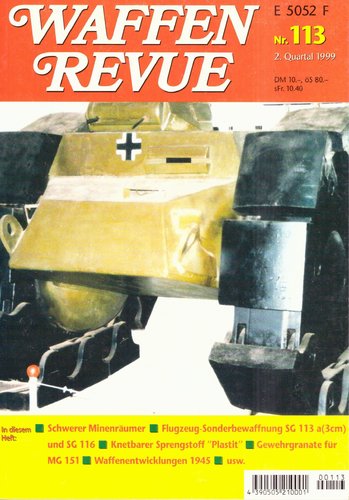The text underneath "10.5cm Panzertod - 10.5 cm Panzerschreck" specifically says:
- "This weapon" singular, meaning one weapon. It does not say "These weapons" as it would if it were referring to two separate weapons of the same caliber.
I wouldn't pay too much attention to such details. This text is a translation, no-one knows how reliable. For example, it could be used as a proof, the Panzerschreck was of the 8 cm calibre, not 8,8 cm.

That development was stopped and then re-started, just as with the agreed upon history of the Panzertod. Alternatively you have to believe that there were two separate weapons, of the same caliber, both with the same start-stop-start development history.
It is an apparent consistency. The document dated February 9, 1945 says "Development is to be taken up again". The problem is, development of the Panzertod was resumed not later than in early December 1944 and the program was going full steam in January and February. For example three different carriages were built in mid. December, firings with an experimental barrel were conducted on February 21 etc.
I also do not understand, why I should believe, two completely different weapons (for example - 10,5 cm Panzerschreck fired full calibre projectiles, Panzertod subcalibre ones, PS rockets were two times heavier then PT, PS launcher was three times lighter than PT, PT range was nearly 2 times greater than PS) are the same weapon, just because you think their development history is a little bit similar?
There's some dispute about whether "RPzB 43" was an original designation or an interim term, but there were clearly two models: the original weapon did not have the protective shield introduced later.
The name 8,8 cm RPzB 43 is known to be used in a couple of letters or reports of late summer/early autumn 1943. The weapon went into service as the 8,8 cm RPzB 54 and so it is called in all manuals. There were two models indeed, but they were 8,8 cm RPzB 54 and 8,8 cm RPzB 54/1. Presence of a shield, muzzle guard, variant of the sights (four types of the rear sight and four types of the front sight) had absolutely no connection with the model designation.
The question is whether the Germans also applied Panzerschreck to the Panzertod/Hammer at some point in its development.
I see no point in asking such a theoretical question with no factual support. One can wonder if e.g. the Bf 109 was designated as the Fw 190 at some point of its development as well. The only clue is "weapon" instead of "weapons" in the AHF document, which is, sorry, completely worthless. It's just a translation of unknown quality, but first of all, such general, brief overviews, even in original German text, are often troubled with typos and smaller or bigger misinterpretations.
Ofenrohr and Panzerschreck were OFFICIAL names of the weapon, Ofenrohr was even used before the 8,8 cm RPzB 43 designation was introduced, then the designation was changed from 8,8 cm RPzB 43 to 8,8 cm RPzB 54 before the weapon was put into service. The name Panzerschreck for the 8,8 cm RPzB 54 was present in official manuals as early as June 1944, also long before the actual Panzertod started to take its shape (December 1944 - February 1945).

